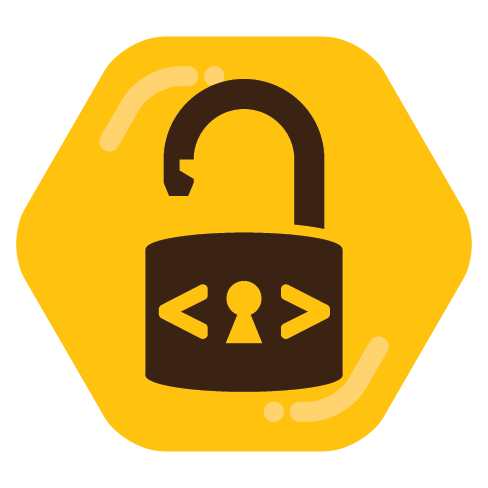

wow… I hadn’t thought of that until you mentioned it but a trackpoint in thumb’s reach on a steamdeck-like device is a great idea. And good marketing continuity for Lenovo


wow… I hadn’t thought of that until you mentioned it but a trackpoint in thumb’s reach on a steamdeck-like device is a great idea. And good marketing continuity for Lenovo


In addition to everything everyone else has said, the launch option: PROTON_LOG=1 %command% (from the wiki). It will create a steam-<gameid>.log in your homedir which can have lots of good wine/proton specific information in it.
You can also rename the user-settings.sample.py file in a given proton version in $HOME/.steam/root/steamapps/common/Proton - <version>/ to user-settings.py and uncomment the additional wine debugging options (PROTON_LOG is already set in this file, but it is not active until it’s renamed or passed directly on the Launch Options line).


Someone posted this https://webvm.io/alpine.html in another community and it made me think of this post. I’ve never used webvm and I suspect there are many downsides but seemed relevant and the demo seems to be able to run a full desktop environment. You have to find a CAD software that supports Linux though which is a controversial topic at best.


There is also Cascade Studio (Demo). Sadly development has stalled, it was a really cool project.
Probably not at all what OP is looking for though since TinkerCAD is just sketch/primitive type workflow, not like openscad.


Yeah I think it probably is. Streaming output from it causes the infrared LED to flash rapidly and the image isn’t coming from the main lens, it’s the smaller lens right next to it.


The really hilarious thing to me is that the NextPush app (unified push provider that can be run on your nextcloud server) is unsupported by nextcloud talk. But it is supported by a bunch of other competing applications.


This probably won’t help with EA and the like adding kernel-level anti-cheat 6 months after release…


Gatgetbridge (your link) has a breakdown of devices they support https://gadgetbridge.org/gadgets/ . You can click through the vendors to find devices which are both “highly supported” and “no vendor-pair”. Meaning most/all the features work without any reliance on the vendor app.
As for the similarity you are asking about with pixel->GrapheneOS, there are very few watches that can run an alternative open source firmware or operating systems apart from the ones that are already open source, like bangle.js, pinetime, etc. Wearables are even more specialized than phones, they require specialized code designed specifically for them and would likely require pretty extreme effort to reverse-engineer.
I use a pebble 2 HR with gadgetbridge but the watch it self runs the old pebble firmware which gadgetbridge talks to. This is fine for me, but if you are looking for a more modern watch you may have to make some compromises.
What version of kde? I haven’t tried it, or read about it beyond the changelog, however the latest beta release says that it supports RDP to connect to plasma desktops which is quite an interesting development if it works the way it sounds like it does:
Remote Desktop system integration to allow RDP clients to connect to Plasma desktops, plus a new page in System Settings for configuring this
For the “from anywhere” component you could use a vpn, but if you’re looking for a simple solution with zero configuration than nomachine or rustdesk seem more appropriate. Just thought the RDP support was worth sharing.


Memories and Gallery (actually deprecated by photos) are not the same thing, just to clarify. I’m not in a position to agree or disagree with any of the statements here since I’ve never used immich, but I don’t want people to think that the default photo viewer in nextcloud is what was being discussed here.


If you want to monitor sleep with it charging at night isn’t possible, and remembering to charge every single day during the day is annoying in my opinion. Not everyone wants sleep monitoring though, or likes to sleep with a watch on, so I get why there’s some division on the subject.
My pebble 2 hr lasts about 5 days and I’m very happy with that frequency of charging. I think it was a bit better when new but that was a long time ago.


But can it sneekily destroy the cables under my desk? And does it sometimes just stop and look at you to think “I could destroy you… if only I was a little bit bigger”.


I think this one https://github.com/nextcloud/desktop/issues/5369 is probably the more relevant, and also open, issue. However even in that issue people claim you can choose not to. The argument is only that it suggests restarting explorer and also rebooting and that this is annoying. So you never get a prompt, it just dies?
I agree though that the amount of time where it was force rebooting is pretty bad, and it looks like the rollout of the patch was mishandled. I also should probably admit that I’ve never touched the windows client, my environment is entirely Linux and Android. The Linux client even with file manager integration doesn’t require restarts of anything.


I mentioned the client in there (4th paragraph), but mine was more of a general rant on the overall low effort that seems to have been put in to figuring out what the actual problem was. And that it is relatively common among people in the self hosting community to assume that Nextcloud is a lot simpler than it is. It’s a huge cloud suite consisting of many applications, clients, plugins, proxies, caching, database, etc. You need to have a pretty good understanding of how it all works, and how to investigate a problem, and ideally you should be testing before upgrades. Large organizations often even test endpoint applications like the desktop client and push out only tested versions to users via policy or some kind of endpoint management.
I can’t really draw many conclusions from the very little information provided in this post, but I suspect OPs windows machine is not in an entirely stable state, which is what is causing some of these update issues.
And, I put some of the blame for Nextcloud under-representing it’s complexity on Nextcloud’s marketing and AIO. You absolutely can install it without understanding anything, and that’s a little dangerous in my opinion because it is actually quite complex and you will probably end up breaking it at some point and need to dig in to fix it.


Ok, I’m prepared to be downvoted today so here goes.
Nextcloud is an enterprise cloud suite. The one you run in docker on your rpi (or whatever) is the same one that is run at a company, albeit with more high availability and redundancy, but the same application, proxies, caching, db, etc. Nothing is stopping you from running the stable channel and testing your upgrades, or even rolling out specific stable client versions to your devices.
Said companies often have teams (more than one person) to run it, stage upgrades, automated testing, automated backups, monitoring, etc. They go to work and do just that, maybe not every day but at least a couple times a week their focus is Nextcloud and only Nextcloud.
What many people in the self hosting community do is spin up docker, without ever having touched docker before, and try to run Nextcloud, forget that it exists, and then upgrade it a year later across multiple versions without maintaining the database. Then they obsess about how fast an app loads by refreshing it a whole bunch, and then complain on internet forums that it sucks. This, like many posts, doesn’t have a specific problem for us to help with, no logs or stack traces have been posted, and the subject of the complaint shows just how terrible your understanding of application security is.
So, while there is legitimate criticism of some of Nextcloud’s design choices, this isn’t it. And at the risk of sounding a little gatekeepy, if you post “nextcloud updates break everything” with no context you probably should spend some time gaining a better understanding of how internet facing services work and make an attempt to fix the problem (probably misconfiguration, and in this desktop client case probably a heap of un-updated local software installed alongside the client), which I’m sure people would find if they did the bare minimum of reading a few log files or any of the other things that come with being an application admin.


“An attacker would need to be able to coerce a system into booting from HTTP if it’s not already doing so, and either be in a position to run the HTTP server in question or MITM traffic to it,” - Matthew Garrett
Summary left out a quite important bit.
I’m currently running AC in GE-Proton8-25… a little out of the loop I guess, what is broken?


This is… exactly my setup too. Works great. The brio is a tiny bit weird in that it appears as two independent video devices in Linux, but choosing the right one is all that’s necessary and it works fine.
That Dirt 3 performance improvement though…
Might have to go dust off that game just to experience the speed